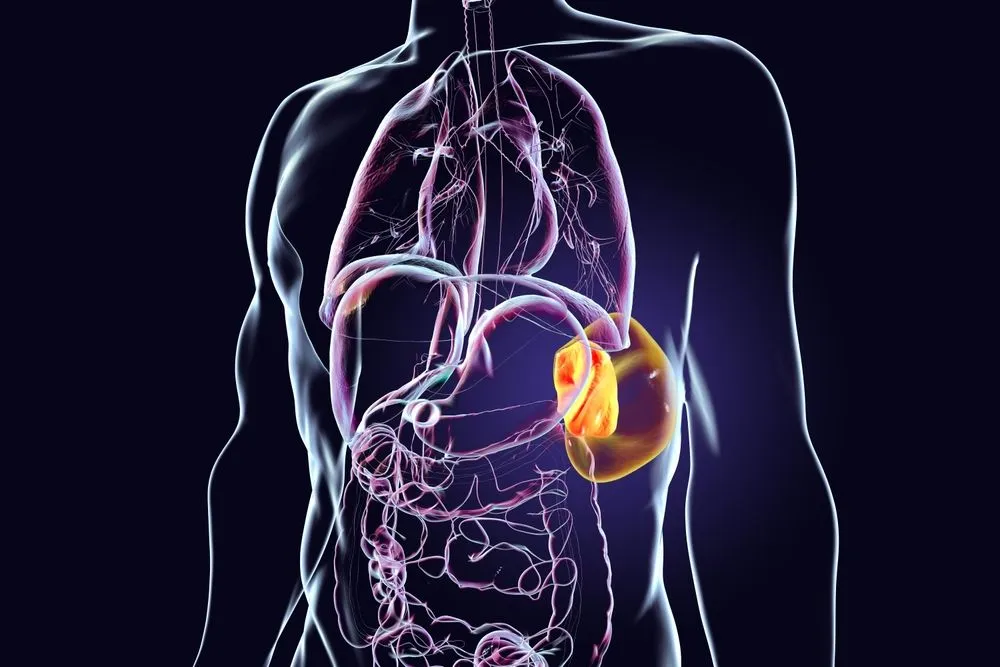What are the Signs and Symptoms of Myelofibrosis?
Myelofibrosis is a serious bone marrow disorder that disrupts the body's normal production of blood cells. The result is extensive scarring in your bone marrow, leading to severe anemia, weakness, fatigue, and often, an enlarged liver and spleen. The signs and symptoms of myelofibrosis usually develop slowly and may include:
- Fatigue and weakness: This is due to anemia, which is a shortage of red blood cells. This can make you feel tired and weak
- Shortness of breath: This is also a result of anemia. Your body may not have enough red blood cells to deliver oxygen to your tissues, causing you to feel short of breath
- Pale skin: A decrease in red blood cells can cause your skin to look paler than normal
- Easy bruising or bleeding: This is due to a decrease in platelets, which are needed for blood clotting
- Fever: This can be a sign of infection, which can occur because the disease weakens the immune system
- Bone pain: This is a less common symptom, but some people with myelofibrosis experience pain in their bones or joints
- Night sweats: These can be a result of the body trying to fight off an infection or due to hormonal imbalances caused by the disease
- Enlarged spleen (splenomegaly): When the bone marrow can't make enough normal cells, the spleen helps out by starting to produce them, causing the spleen to grow larger. This can result in pain or a feeling of fullness below the ribs on the left side
Seek Care For Your Myelofibrosis
Seeking medical attention promptly if you are experiencing symptoms related to your myelofibrosis is of utmost importance. Prompt initiation of treatment is essential to achieve the best possible outcomes. Delaying treatment can allow the myelofibrosis to progress, making it more challenging to achieve remission.
Medical attention can help manage and alleviate your symptoms and side effects and allow doctors to tailor a myelofibrosis treatment plan that allows you to live as comfortably as possible. Doctors can adjust treatment as needed and provide supportive care to manage treatment-related side effects and complications. Coping with a cancer diagnosis is emotionally and psychologically challenging. You don't have to deal with side effects alone. In addition to discussing with your medical team, if you are experiencing myelofibrosis symptoms and want to know what has worked for other blood cancer patients, visit HealthTree's Side Effect Solutions tool. Here you can search for the symptoms you are experiencing and read about what's worked (and what hasn't worked) for patients just like you.
Learn More About Myelofibrosis
Keep exploring HealthTree News for real patient stories, expert insights, and weekly updates on the latest in care and science.
Myelofibrosis is a serious bone marrow disorder that disrupts the body's normal production of blood cells. The result is extensive scarring in your bone marrow, leading to severe anemia, weakness, fatigue, and often, an enlarged liver and spleen. The signs and symptoms of myelofibrosis usually develop slowly and may include:
- Fatigue and weakness: This is due to anemia, which is a shortage of red blood cells. This can make you feel tired and weak
- Shortness of breath: This is also a result of anemia. Your body may not have enough red blood cells to deliver oxygen to your tissues, causing you to feel short of breath
- Pale skin: A decrease in red blood cells can cause your skin to look paler than normal
- Easy bruising or bleeding: This is due to a decrease in platelets, which are needed for blood clotting
- Fever: This can be a sign of infection, which can occur because the disease weakens the immune system
- Bone pain: This is a less common symptom, but some people with myelofibrosis experience pain in their bones or joints
- Night sweats: These can be a result of the body trying to fight off an infection or due to hormonal imbalances caused by the disease
- Enlarged spleen (splenomegaly): When the bone marrow can't make enough normal cells, the spleen helps out by starting to produce them, causing the spleen to grow larger. This can result in pain or a feeling of fullness below the ribs on the left side
Seek Care For Your Myelofibrosis
Seeking medical attention promptly if you are experiencing symptoms related to your myelofibrosis is of utmost importance. Prompt initiation of treatment is essential to achieve the best possible outcomes. Delaying treatment can allow the myelofibrosis to progress, making it more challenging to achieve remission.
Medical attention can help manage and alleviate your symptoms and side effects and allow doctors to tailor a myelofibrosis treatment plan that allows you to live as comfortably as possible. Doctors can adjust treatment as needed and provide supportive care to manage treatment-related side effects and complications. Coping with a cancer diagnosis is emotionally and psychologically challenging. You don't have to deal with side effects alone. In addition to discussing with your medical team, if you are experiencing myelofibrosis symptoms and want to know what has worked for other blood cancer patients, visit HealthTree's Side Effect Solutions tool. Here you can search for the symptoms you are experiencing and read about what's worked (and what hasn't worked) for patients just like you.
Learn More About Myelofibrosis
Keep exploring HealthTree News for real patient stories, expert insights, and weekly updates on the latest in care and science.
Trending Articles
Get the Latest Myelofibrosis Updates, Delivered to You.
By subscribing to the HealthTree newsletter, you'll receive the latest research, treatment updates, and expert insights to help you navigate your health.
Together we care.
Together we cure.
3x Faster.




